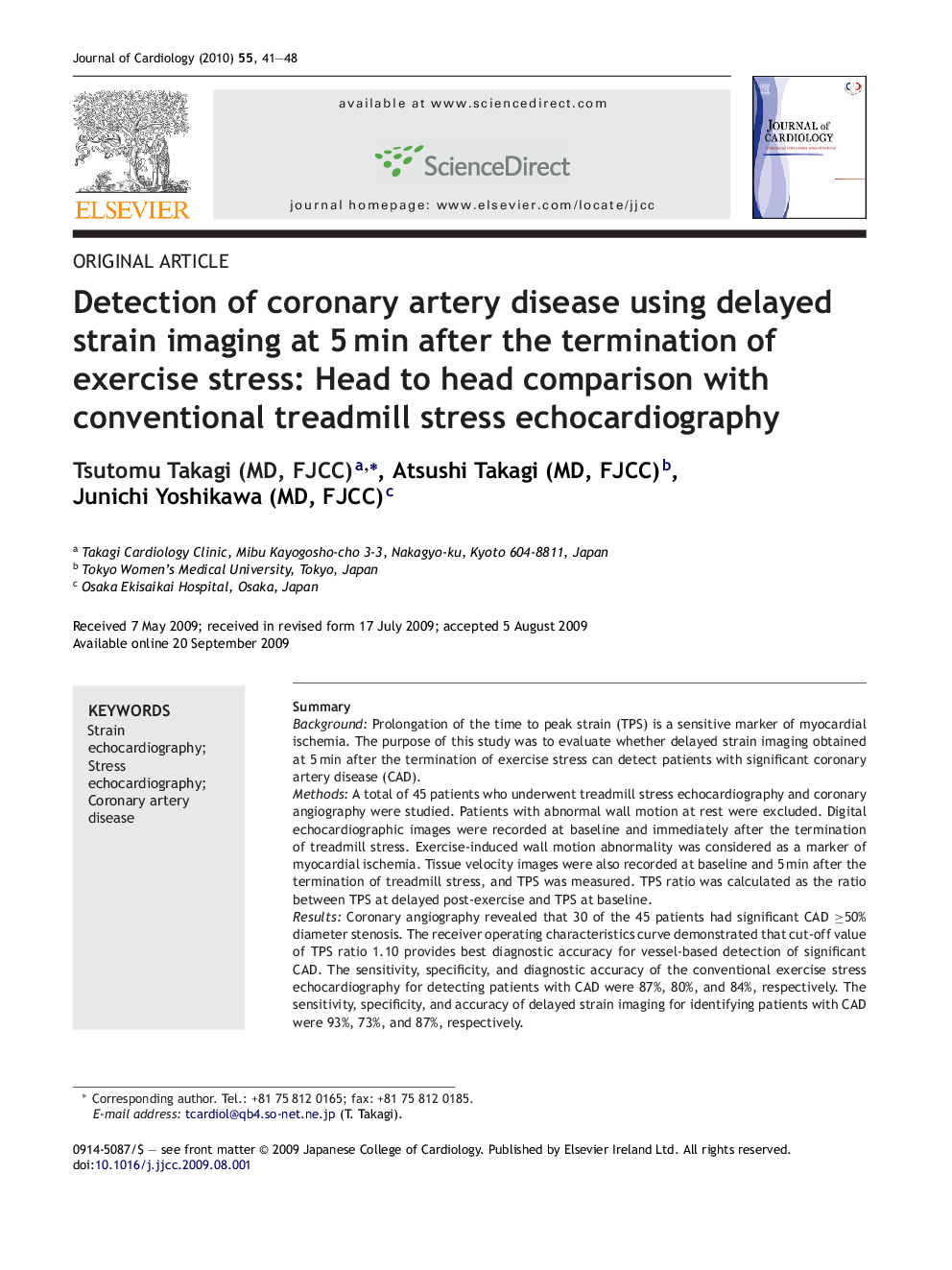| Article ID | Journal | Published Year | Pages | File Type |
|---|---|---|---|---|
| 2963471 | Journal of Cardiology | 2010 | 8 Pages |
SummaryBackgroundProlongation of the time to peak strain (TPS) is a sensitive marker of myocardial ischemia. The purpose of this study was to evaluate whether delayed strain imaging obtained at 5 min after the termination of exercise stress can detect patients with significant coronary artery disease (CAD).MethodsA total of 45 patients who underwent treadmill stress echocardiography and coronary angiography were studied. Patients with abnormal wall motion at rest were excluded. Digital echocardiographic images were recorded at baseline and immediately after the termination of treadmill stress. Exercise-induced wall motion abnormality was considered as a marker of myocardial ischemia. Tissue velocity images were also recorded at baseline and 5 min after the termination of treadmill stress, and TPS was measured. TPS ratio was calculated as the ratio between TPS at delayed post-exercise and TPS at baseline.ResultsCoronary angiography revealed that 30 of the 45 patients had significant CAD ≥50% diameter stenosis. The receiver operating characteristics curve demonstrated that cut-off value of TPS ratio 1.10 provides best diagnostic accuracy for vessel-based detection of significant CAD. The sensitivity, specificity, and diagnostic accuracy of the conventional exercise stress echocardiography for detecting patients with CAD were 87%, 80%, and 84%, respectively. The sensitivity, specificity, and accuracy of delayed strain imaging for identifying patients with CAD were 93%, 73%, and 87%, respectively.ConclusionDelayed strain imaging obtained at 5 min after the termination of exercise stress can accurately detect patients with significant CAD.
